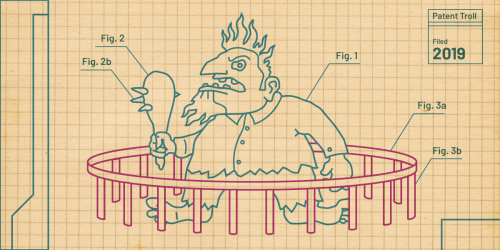A Senate subcommittee recently concluded three days of testimony about a proposed patent bill that, we have explained, would be a terrible idea. Proponents of the bill keep saying that Section 101 of U.S. patent law, which bars patents on things like abstract ideas and laws of nature, needs to be changed. One recurring argument is that Section 101 is killing patents that are being granted in Europe and China and that somehow this hurts innovation in the U.S.
The argument is flawed for many reasons. Proponents of this bill have vastly overstated the number of Section 101 rejections. Patent applications are rejected for many different reasons. For instance, an examiner could find that an invention would have been obvious—that might lead to a Section 103 rejection. Or an examiner could find that the application simply isn’t clear at all, leading to a Section 112 rejection.
But proponents of the bill, such as former US Patent Office Director David Kappos, simply claim there’s an epidemic of Section 101 rejections by lumping all these different types of rejections together. When Joshua Landau, a patent attorney who works for a computer industry group, examined a selection of the data set that Kappos was using, he found that only 13 percent of the applications in the group were clearly Section 101 rejections.
Rejection Doesn't Have to Hurt
It’s also wrong to assume that all rejections of patent applications are bad. Rejections often lead applicants to amend their claims, usually by narrowing their scope to avoid prior art references or add clarity that gives the public more notice. When an applicant can’t amend around an examiner’s objection, rejecting that application is good for the public. When applications are rejected, the public is protected from an undeserved monopoly. A patent holder could control a market, limit competition, and raise prices for us all.
Practically speaking, patents granted by foreign countries have little to no effect on competition and innovation in the U.S. because foreign patents have no power here. They can’t be used to stop anyone from making, using, or selling anything on U.S. soil. They can only be used to stop people from doing those things in their country of issuance.
A glut of foreign patents won’t be a threat to U.S. companies. It could even give developers and start-ups here a competitive edge over their foreign rivals. Granting more software patents and strengthening their resistance to challenge will force software and e-commerce companies, including small ones, to fend off patent licensing demands based on the threat of lawsuits. Foreign companies would have to spend less on engineers, and more on lawyers. We don’t view that as a good thing—bad patents in any country can threaten innovation globally. But it’s not useful, or accurate, to assume other countries are gaining an edge by having more patents.
So even if what we’re hearing about foreign patent practices were true, it’s hardly a reason to re-write U.S. patent law. Given the proven success of the U.S. software industry, it would only confirm the laws we have are working.
Patently Misunderstood
Finally, much of what proponents of the proposed patent bill are saying about patents in Europe and China is just factually inaccurate.
First, they claim that the European Patent Office is granting applications that would fail under Section 101 in the U.S. That’s not true. While Europe’s software patent law is written differently, it includes sections that are roughly the same, in practice, as today’s Section 101. In the U.S., patents on software are limited through Section 101, and the Supreme Court’s case law, like the Alice v. CLS Bank case.
In Europe, there is an explicit rule against patenting “mathematical methods” and “programs for computers.” That prohibition isn’t as broad as it sounds—it’s limited by guidelines allowing patents on computer programs that have a “technical character” and on artificial intelligence software that has a “technical purpose.” As a result, Europe has similar rules around patenting software—for better and for worse. The point here is, proponents are wrong that Europe grants lots of software patents that the U.S. rejects.
Second, bill proponents have said that China is granting lots of patents. That is true, but the vast majority of them are extremely low-value. Recent news reports suggest that only 23 percent of Chinese patents even cover “inventions”—the majority are for “utility models” which are often allowed to lapse after a few years. And virtually none of the applications originating in China are “triadic patents” (patents filed jointly in the patent offices of Japan, the United States, and European Union), which are widely considered “the gold standard” for patent protection.
Applicants in China are motivated at least in part by government intervention. The Chinese government provides financial and other initiatives for new patent applications—but not renewals, which is why abandonment rates are as high as 91% for design patents.
In other words, there’s no reason to think the Chinese patent system is a model the U.S. should depart from longstanding principles in order to follow more closely.
Despite what those who wish to re-write patent law’s most important parts are saying, the state of the laws in Europe and China doesn’t suggest, in any way, that the U.S. should change ours. The Tillis-Coons patent bill currently under consideration would open the door to patents on things like abstract ideas and laws of nature. That’s a terrible idea, and Congress should reject it.
TELL CONGRESS WE DON'T NEED MORE BAD PATENTS









